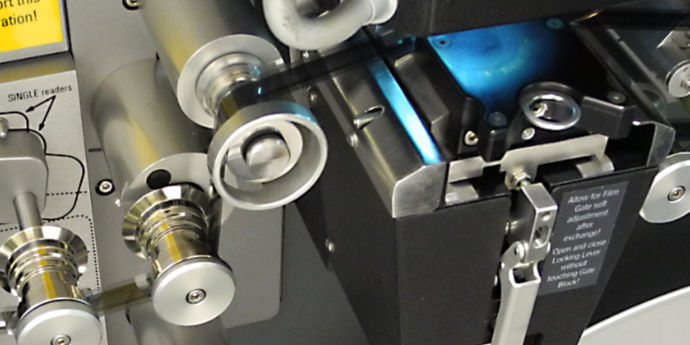The 1963 Tarax Show Christmas Pantomime, “Marianne” has been the focus of this blog for some time, especially the stabilisation process previously described.
The stabilisation and removal of jitter (present from the 16mm film recording plus more introduced during scanning) worked very well. But there was still the problem of dust and scratches.
Commercial semi-manual solutions are very expensive. Could there be there something more affordable? For a while it seemed not.
Then I learned that the Loki software which comes with the Golden Eye scanner (already discovered at Cameraquip in South Melbourne) has an automatic filter for “dust busting” and fortunately the cost was not prohibitive.
So that was the next step in restoration of this production — to pass the digitally stabilised footage through the dust reduction filter in Loki. (I am grateful to Malcolm Richards for his work in doing this.)
Revisiting the Pixel Aspect Ratio Decision
Before doing so, the question of Pixel Aspect Ratio (PAR) reared its head again (see earlier posts in this blog). You may remember the earlier decision to choose standard PAL SD format as the final delivery format, the rationale being that DVD was the most practical distribution medium. PAL SD requires non-square pixels and the the stabilisation process had been configured to produce output files with PAR=1.0666.
But I was never really happy with non-square pixels since they do not fit well with digital displays such as found on computers — requiring fractional horizontal stretching of pixels which creates subtle blurring.
Eventually more than one person suggested that, with the ubiquitous presence of online video, DVDs are rapidly becoming a thing of the past and that online delivery is the new norm.
The decision was made. I would re-run the stabilisation process with PAR=1.0, which makes the final resolution 576 x 768 pixels, plenty adequate to preserve the actual resolution present in the 16mm film recording.
With that done, it was time to dispatch the footage to Cameraquip for the Loki treatment.
How Did Loki Fare?
As one might expect, the results from Loki are a mixed bag. The filter is good at removing small dust marks (which are of course unique to individual frames). It also, surprisingly, does a good job with quad videotape dropouts — the short horizontal black segments in a scan line, caused by one of the rotating video heads losing signal momentarily on record or play.
At the same time, the Loki filter does miss some dust marks. Neither does it fix larger blemishes. In professional film restoration workflows, these are fixed manually.
If you’re interested in such things, there is a fascinating short documentary titled: “THE THIRD MAN — Restoring A Classic — Stunning 4K Edition” showing the process of restoring Carol Reid’s classic British thriller.
https://www.youtube.com/watch?v=OysfWAHSQp8
But back to Marianne, reducing the dust marks with the automated Loki software has delivered a good result for this historical material.
There’s just a couple more things to do:
-
Adjust the video levels to create a consistent tonality.
-
Repair and equalise the audio track.
Then it will be ready for release.
